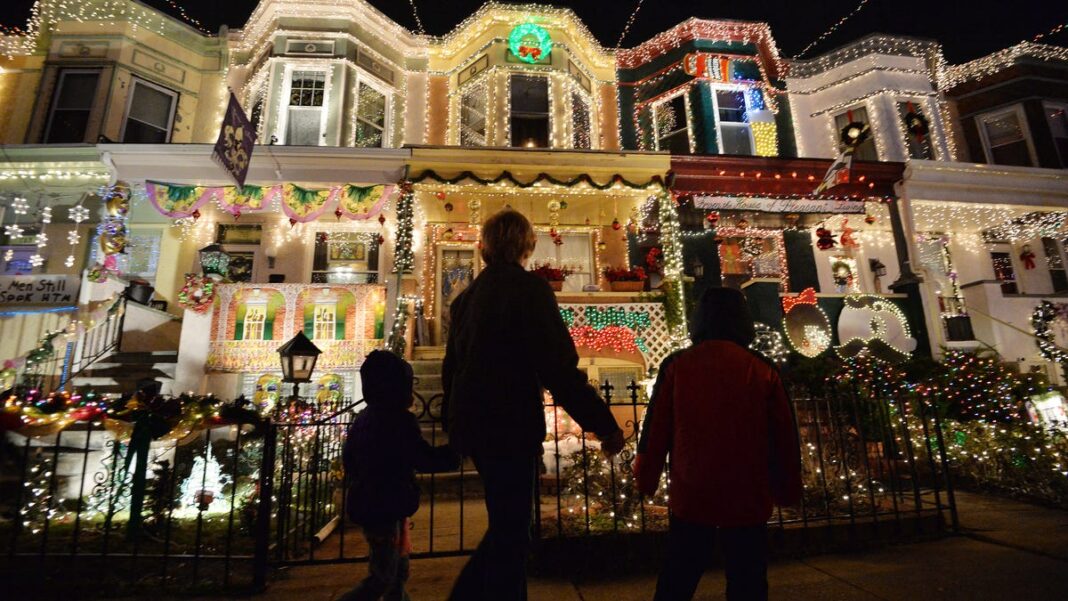Holiday Decorating: A Potential Risk to Your Safety
Recently, a tragic incident occurred in Southern California where a 24-year-old man lost his life due to electrocution while hanging Christmas lights at his family’s house. Just days later in Massachusetts, a contractor suffered a severe electrical shock while adorning a large Christmas tree but was revived thanks to the quick response of emergency personnel.
These accidents have prompted safety officials to reiterate the importance of being cautious with Christmas trees, lights, and holiday decorations.
The Consumer Product Safety Commission (CPSC) reports that about 160 injuries related to holiday decorating happen daily during this season, with almost half involving falls.
During the previous 2023 holiday season, which spanned from Nov. 1, 2022, to Jan. 31, 2023, roughly 14,900 people were treated in hospitals for injuries caused by holiday decorations, according to CPSC data.
To stay safe this holiday season, keep these guidelines in mind:
- The CPSC suggests ensuring that your live Christmas tree is well-watered. When choosing an artificial tree, look for one labeled “Fire Resistant.”
- It’s advised not to leave candles unattended and to opt for flameless candles whenever possible. According to the National Fire Protection Association (NFPA), around 46% of decoration-related fires in December originate from candles, compared to about 32% in the other months.
- Do not string more than three sets of incandescent lights together and avoid overloading electrical outlets. The CPSC also recommends inspecting lights each year before use and disposing of any that show signs of wear such as frayed wires or cracks.
- The U.S. Fire Administration urges daily watering of Christmas trees, as dry trees are highly flammable. Keep trees at least three feet away from heat sources like heaters and fireplaces.
- As Christmas trees age and dry out, they become more of a fire risk. Consequently, it’s best to dispose of them promptly after the holidays or when they become dry.
Home Fires Caused by Christmas Trees and Other Decorations
On average, from 2018 to 2022, firefighters responded to around 155 home fires sparked by Christmas trees each year, along with another 835 fires caused by other holiday decorations, according to the NFPA.
“These incidents led to an average of 3 civilian fire deaths, 30 injuries, and $14 million in property damage annually,” the NFPA stated.
Electrical lighting was implicated in 41% of Christmas tree fires, with lamps or bulbs responsible for another 20%, and candles causing 11% of the tree fires.
Hazards Associated with Toys and How to Prevent Them
In addition to the risks from Christmas trees and lights, authorities are once again warning about toy-related hazards. The CPSC, in partnership with U.S. Customs and Border Protection, confiscated over 1.5 million hazardous or illegal toys in fiscal year 2024, with more than 102,000 related to lead.
To avoid toy-related incidents, consider the following tips from the CPSC:
- Adhere to age recommendations and safety information provided on toy packaging.
- When buying riding toys, such as scooters, make sure to also purchase safety gear.
- Keep small toys and those with small parts away from children under 3, and deflated balloons should be kept away from kids under 8.

